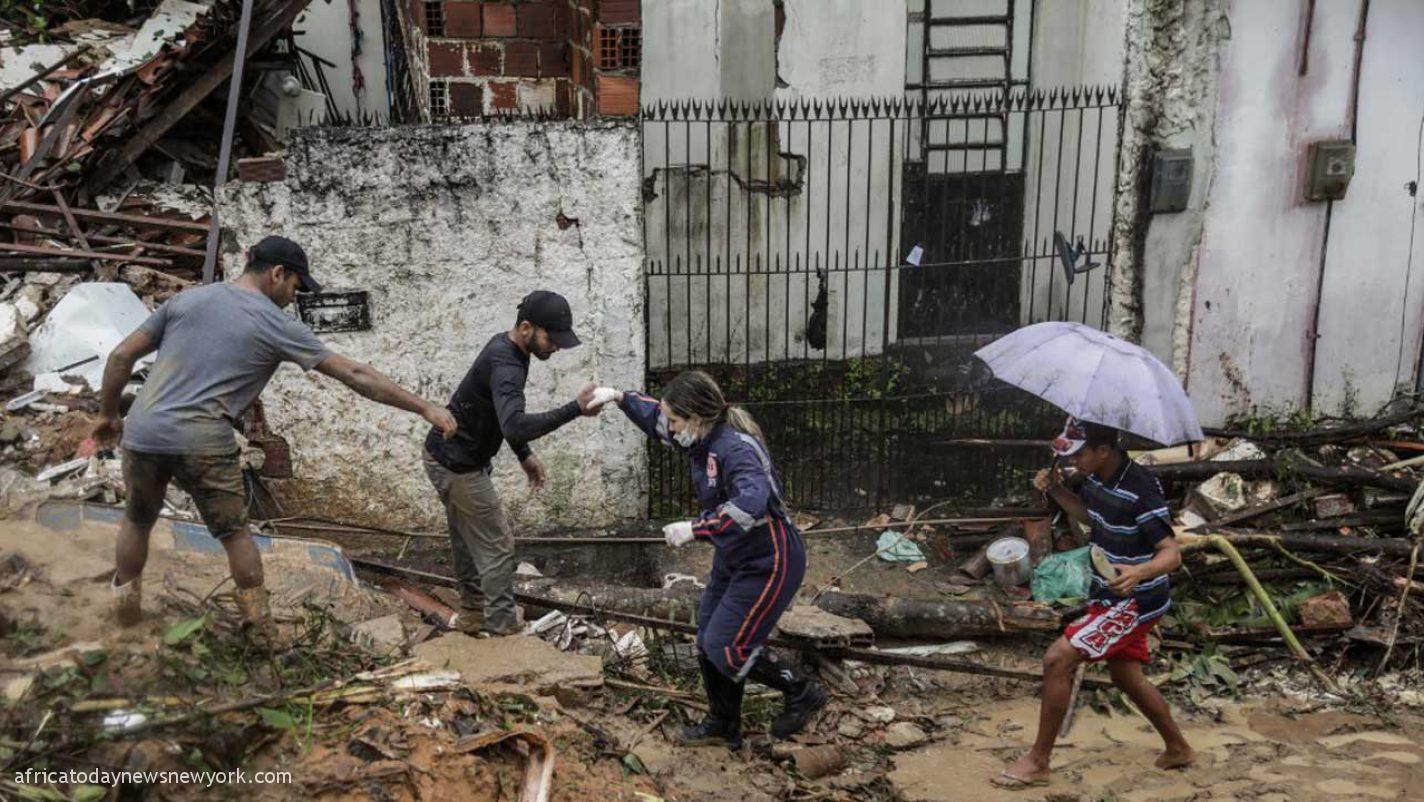No fewer than 44 people have been confirmed dead following Torrential rains in northeastern Brazil which have also left dozens missing, the government has confirmed, as rescuers capitalised on a lull in downpours to search for survivors.
‘We registered 44 dead, 56 missing, 25 injured, 3,957 without shelter and 533 displaced,’ Minister of Regional Development Daniel Ferreira told a press conference in Recife, the capital of hard-hit northeastern Pernambuco state.
Africa Today News, New York reports that the disaster is the latest in a recent series of deadly landslides and floods triggered by extreme weather in Brazil.
The number of dead had mounted from 34 since Saturday, with at least 28 killed in landslides, as heavy rains caused rivers to overflow and torrents of mud swept away everything in their path.
Authorities warned that heavy rain was forecast to continue Sunday, but the storm subsided in the morning.
Read Also: Brazil ‘Neutral’ In Russia-Ukraine Crisis – Bolsonaro
As the weather broke, some 1,200 personnel resumed search and rescue work, state officials said, but Ferreira urged caution.
‘Although it has stopped raining now, we are forecasting heavy rains for the next few days,’ he said.
‘So the first thing is to maintain self-protection measures.’
Africa Today News, New York reports that between Friday night and Saturday morning, rainfall volume reached 70 percent of what was forecast for all of May in some parts of Recife.
Brazilian President Jair Bolsonaro said Sunday he would travel to Recife on Monday following the “tragedy.”
Over the past year, hundreds of Brazilians have died in flooding and landslides brought on by torrential downpours.
In February, more than 230 people were killed in the city of Petropolis, the Brazilian then-empire’s 19th-century summer capital, in Rio de Janeiro state.
Early last month 14 more were killed by flooding and landslides in the state.
Experts say Brazil’s rainy season downpours are being augmented by La Nina — the cyclical cooling of the Pacific Ocean — and by climate change.
Because a hotter atmosphere holds more water, global warming increases the risk and intensity of flooding from extreme rainfall.
Risks from heavy rains are augmented by topography and poor construction in shantytowns built in steep areas.

